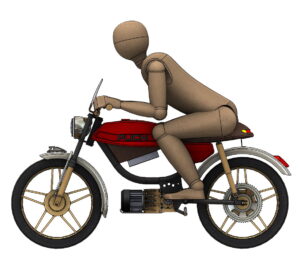The Dreadnought class is the next generation of ballistic missile submarines (SSBNs) being developed for the Royal Navy, designed to replace the aging Vanguard-class submarines that currently carry the UK’s Trident nuclear deterrent. These nuclear-powered submarines will be among the most advanced in the world, capable of remaining submerged for extended periods thanks to their nuclear reactor propulsion. Measuring approximately 153 meters in length, they will be slightly larger than their predecessors and feature significant technological advancements.


Continue reading for more info and a free STL file for 3d printing your Dreadnaught. If you want to proceed to buy our paid hi rez 33 piece STL file pack, HERE IT IS.


One of the most critical aspects of the Dreadnought-class is its armament. Each submarine will be equipped with Trident II D5 intercontinental ballistic missiles (ICBMs), ensuring the UK maintains its continuous at-sea deterrence policy. To enhance their survivability, these submarines will incorporate advanced stealth technology, making them far quieter and harder to detect than previous classes. Additionally, improved automation systems may allow for a smaller crew, making operations more efficient while maintaining high levels of combat readiness.


Another key feature of the class is the Common Missile Compartment (CMC), developed in collaboration with the United States. This modular design is also used in the US Navy’s Columbia-class SSBNs, reflecting a high degree of Anglo-American cooperation in nuclear deterrence strategy. The four planned submarines—HMS Dreadnought, HMS Valiant, HMS Warspite, and HMS King George VI—are expected to enter service starting in the early 2030s, securing Britain’s nuclear deterrence capabilities for decades to come.



The missile silo hatches open and close.



The hull thickness is around 5mms in most areas.


High efficiency helical screw propeller is used in this model.
The free STL file will be here soon, If you want to proceed to buy our paid hi-poly 33 piece STL file pack, HERE IT IS. It has interlocking assembly details and additional parts for easier building and possibly converting to an RC project.

For simplifying the build, all silo hatches are made as identical to each other. Similarly all rear rudders and dive planes are identical as well as noth front dive planes are identical.


Below is the free STL file for 3d printing a standalone one-piece display model. Enjoy.





 Users Today : 27
Users Today : 27 Users Yesterday : 79
Users Yesterday : 79 Users Last 7 days : 534
Users Last 7 days : 534 Views Today : 129
Views Today : 129 Views Yesterday : 287
Views Yesterday : 287 Views Last 7 days : 2128
Views Last 7 days : 2128 Total views : 1289010
Total views : 1289010 Who's Online : 0
Who's Online : 0